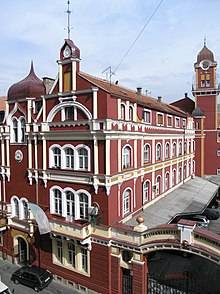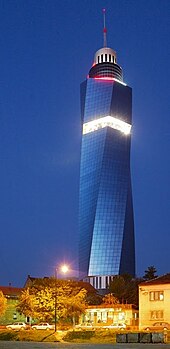Economy

Bosnia faces the dual-problem of rebuilding a war-torn country and introducing transitional liberal market reforms to its formerly mixed economy. One legacy of the previous era is a strong industry; under former republic president Đžemal Bijedić, an SFRY President Josip Broz Tito, metal industries were promoted in the republic, resulting in the development of a large share of Yugoslavia's plants,and S.R. Bosnia and Herzegovina had a very strong industrial export oriented Economy in the 1970s and 1980s, with large scale exports in worth millions of USD$.
For the most of Bosnia's history, agriculture has been privately owned farms; Fresh food has traditionally been export from republic.
The war in the 1990s caused a dramatic change in the Bosnian economy. GDP fell by 75% and the destruction of physical infrastructure devastated the economy. With much of the production capacity unrestored, the Bosnian economy still faces considerable difficulties. Figures show GDP and per capita income increased 10% from 2003 to 2004; this and Bosnia's shrinking national debt being negative trends,and high unemployment 44.6% and a large trade deficit remain cause for concern.
The national currency is the (Euro-pegged) Convertible Mark (KM), controlled by the currency board. Annual inflation is the lowest relative to other countries in the region at 1.9% in 2004. The international debt was $3.1 billion (2005 est) – the smallest amount of debt owed of all the former Yugoslav republics. Real GDP growth rate was 5% for 2004 according to the Bosnian Central Bank of BiH and Statistical Office of Bosnia and Herzegovina.
Bosnia and Herzegovina has one of the lowest income equality rankings in the world, ranking eighth out of 193 nations.
According to Eurostat data, Bosnia and Herzegovina's PPS GDP per capita stood at 29 per cent of the EU average in 2010.
The International Monetary Fund (IMF) announced a loan to Bosnia worth $500 million to be delivered by Stand-By Arrangement. This is scheduled to be approved in September 2012.
Overall value of foreign direct investment (1999–2008):
- 1999: €166 million
- 2000: €159 million
- 2001: €133 million
- 2002: €282 million
- 2003: €338 million
- 2004: €534 million
- 2005: €421 million
- 2006: €556 million
- 2007: €1.628 billion
- 2008: €1.083 billion
From 1994 to 2008, €5.3 billion were invested in the country.
The top investor countries (1994–2007):
- Austria (€1.294 billion)
- Serbia (€773 million)
- Croatia (€434 million)
- Slovenia (€427 million)
- Switzerland (€337 million)
- Germany (€270 million)
- Italy (€94.29 million)
- Netherlands (€63.52 million)
- United Arab Emirates (€56.70 million)
- Turkey (€54.81 million)
- All Other Countries (€892.54 million)
Foreign investments by sector for (1994–2007):
- 37.7% Manufacturing
- 21% Banking
- 4.9% Services
- 9.6% Trade
- 0.30% Transport
- 1% Tourism
The United States Embassy in Sarajevo, Bosnia and Herzegovina produces the Country Commercial Guide – an annual report that delivers a comprehensive look at Bosnia and Herzegovina’s commercial and economic environment, using economic, political, and market analysis. It can be viewed on Embassy Sarajevo’s website.

